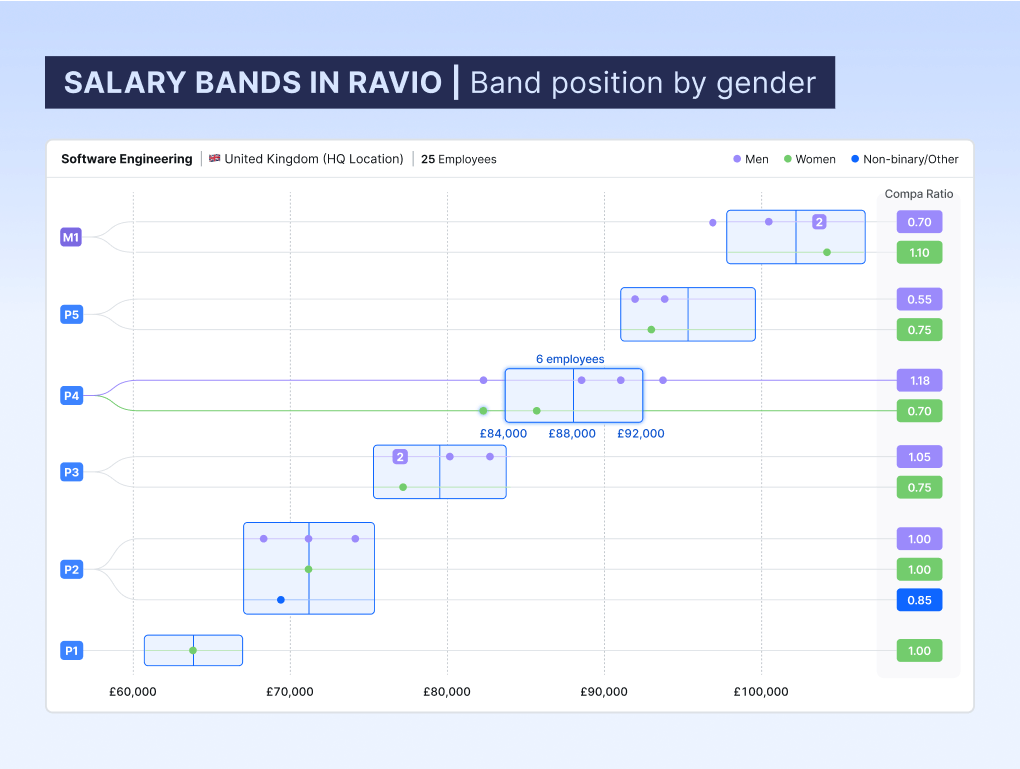Top 6 Pay Band Models That Industry Leaders Use
1. Traditional Grade-Based Bands
The most common approach featuring 10-15 distinct pay grades with 40-60% salary ranges, perfect for hierarchical organizations seeking clear career progression paths.
2. Broadbanding Systems
Fewer, wider salary bands (typically 5-8) that offer greater flexibility for lateral moves and skill development, ideal for flatter organizational structures.
3. Market-Based Pay Bands
Compensation ranges directly tied to external market data, ensuring competitive positioning while maintaining internal equity across similar roles.
4. Competency-Driven Bands
Pay structures based on specific skills and competencies rather than job titles, promoting continuous learning and professional development.
5. Geographic Pay Bands
Location-adjusted salary ranges that account for cost-of-living differences while maintaining consistent role expectations across multiple markets.
6. Performance-Linked Bands
Dynamic pay ranges that adjust based on individual and team performance metrics, encouraging high achievement and results-driven behavior.



